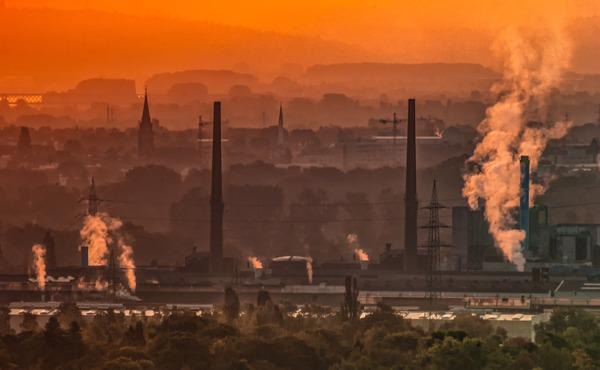Feb 3 2021
A new study by the National Center for Atmospheric Research (NCAR) reports that the lockdowns and decrease in societal activity associated with the COVID-19 pandemic influenced emissions of pollutants such that the planet was slightly warmed for several months last year.
 Emissions of airborne particles, or aerosols, tend to block incoming sunlight and cool temperatures. Image Credit: Analogicus from Pixabay.
Emissions of airborne particles, or aerosols, tend to block incoming sunlight and cool temperatures. Image Credit: Analogicus from Pixabay.
The results of the study emphasize the impact of airborne particles, or aerosols, that block incoming sunlight. With the drop in aerosol emissions last spring, the planet received more of the Sun’s warmth, specifically in heavily industrialized countries, like the United States and Russia, which normally release higher amounts of aerosols into the atmosphere.
There was a big decline in emissions from the most polluting industries, and that had immediate, short-term effects on temperatures. Pollution cools the planet, so it makes sense that pollution reductions would warm the planet.
Andrew Gettelman, Study Lead Author and Scientist, NCAR
Last spring, temperatures over several regions of Earth’s land surface were around 0.2 °F to 0.5 °F (0.1°C to 0.3 °C) warmer compared to what would have been anticipated with prevalent weather conditions, the research discovered.
The effect was most evident in regions often associated with considerable amounts of aerosol emissions, where the warming reached nearly 0.7 °F (0.37 °C) over most parts of the United States and Russia.
The new research underscores the intricate and generally contradictory impacts of various types of emissions from industrial facilities, motor vehicles, power plants and other similar sources. Aerosols brighten clouds and reflect the solar heat back into space.
By contrast, carbon dioxide and other greenhouse gases have the reverse effect and capture heat near the planet’s surface and increasing temperatures.
Gettelman highlighted that, regardless of the short-term warming effects, the long-term influence of the pandemic might be a slight slowdown of climate change due to a decrease in emissions of carbon dioxide, which stays in the atmosphere for several decades and influences the climate very slowly.
On the other hand, aerosols—the focus of the new research—show an instantaneous effect that vanished in a few years.
The research was published in the Geophysical Research Letters journal. It was partially funded by the National Science Foundation, NCAR’s sponsor. As well as the NCAR researchers, the study was co-authored by researchers from Oxford University, Imperial College London and the University of Leeds.
Teasing Out the Impacts
Researchers have been able to measure the warming effects of carbon dioxide for a long time, but the climatic impact of aerosols of different types—such as nitrates, sulfates, dust and black carbon—has been challenging to define.
One of the major difficulties faced while predicting the extent of future climate change is to predict the extent to which society will continue to emit aerosols in the future, as well as the impact of the various types of aerosols on temperature and clouds.
Gettelman and his co-authors conducted the study by using two of the leading climate models in world: the NCAR-based Community Earth System Model and a model called ECHAM-HAMMOZ, developed by a consortium of European nations.
They performed simulations on both models by adjusting aerosol emissions and adding actual meteorological conditions in 2020, like winds.
Using this technique, they could find the effect of reduced emissions on changes in temperature that were too minuscule to identify as part of actual observations, where they could be hidden by the variability in atmospheric conditions.
The study findings demonstrated the warming effect to be strongest in the mid and upper latitudes of the Northern Hemisphere. It was mixed in the tropics and relatively less in most parts of the Southern Hemisphere, where aerosol emissions are not so widespread.
According to Gettelman, the study will enable researchers to gain better insights into the effect of different types of aerosols under various atmospheric conditions, supporting attempts to mitigate climate change.
The study shows how aerosols tackle the warming effect of greenhouse gases, but Gettelman highlighted that emitting more aerosols into the lower atmosphere is not a feasible approach to slow down climate change.
Aerosol emissions have major health ramifications. Saying we should pollute is not practical.
Andrew Gettelman, Study Lead Author and Scientist, NCAR
Journal Reference:
Gettleman, A., et al. (2020) Climate Impacts of COVID‐19 Induced Emission Changes. Geophysical Research Letters. doi.org/10.1029/2020GL091805.